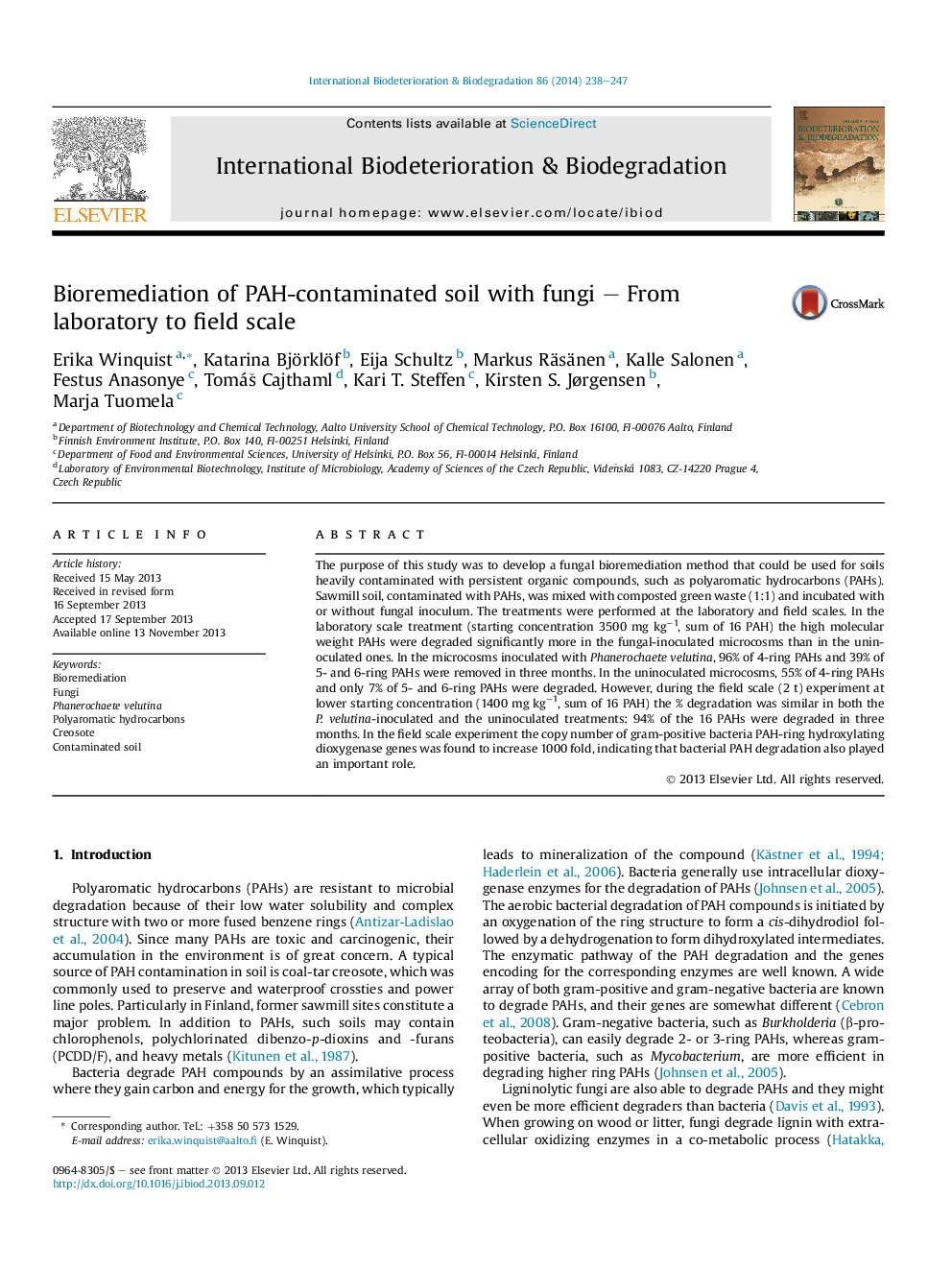| Article ID | Journal | Published Year | Pages | File Type |
|---|---|---|---|---|
| 4364807 | International Biodeterioration & Biodegradation | 2014 | 10 Pages |
•First time fungal treatment of PAH contaminated soil was applied in field scale.•94% of total PAHs were degraded from highly contaminated aged soil.•Bioaccessible fraction of PAHs in soil corresponded to degradation of PAHs.•Soil toxicity decreased as measured by survival of earthworms.•DNA identification method for Phanerochaete velutina was developed to monitor growth in soil.
The purpose of this study was to develop a fungal bioremediation method that could be used for soils heavily contaminated with persistent organic compounds, such as polyaromatic hydrocarbons (PAHs). Sawmill soil, contaminated with PAHs, was mixed with composted green waste (1:1) and incubated with or without fungal inoculum. The treatments were performed at the laboratory and field scales. In the laboratory scale treatment (starting concentration 3500 mg kg−1, sum of 16 PAH) the high molecular weight PAHs were degraded significantly more in the fungal-inoculated microcosms than in the uninoculated ones. In the microcosms inoculated with Phanerochaete velutina, 96% of 4-ring PAHs and 39% of 5- and 6-ring PAHs were removed in three months. In the uninoculated microcosms, 55% of 4-ring PAHs and only 7% of 5- and 6-ring PAHs were degraded. However, during the field scale (2 t) experiment at lower starting concentration (1400 mg kg−1, sum of 16 PAH) the % degradation was similar in both the P. velutina-inoculated and the uninoculated treatments: 94% of the 16 PAHs were degraded in three months. In the field scale experiment the copy number of gram-positive bacteria PAH-ring hydroxylating dioxygenase genes was found to increase 1000 fold, indicating that bacterial PAH degradation also played an important role.
Graphical abstractFigure optionsDownload full-size imageDownload as PowerPoint slide
